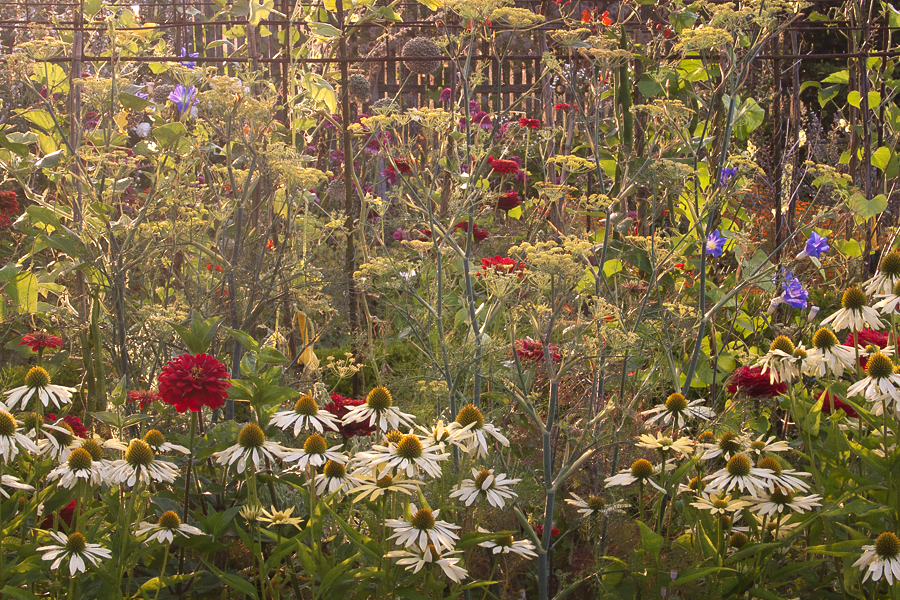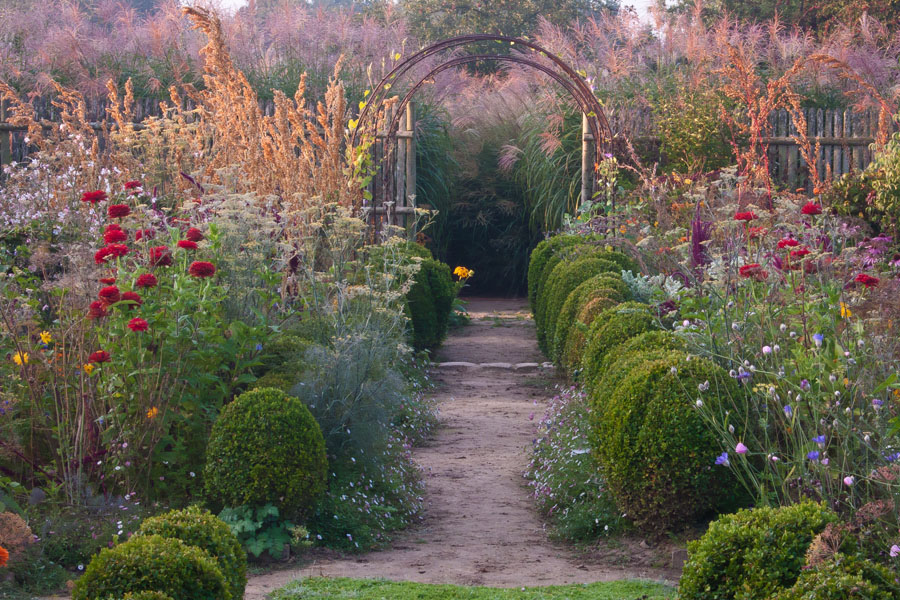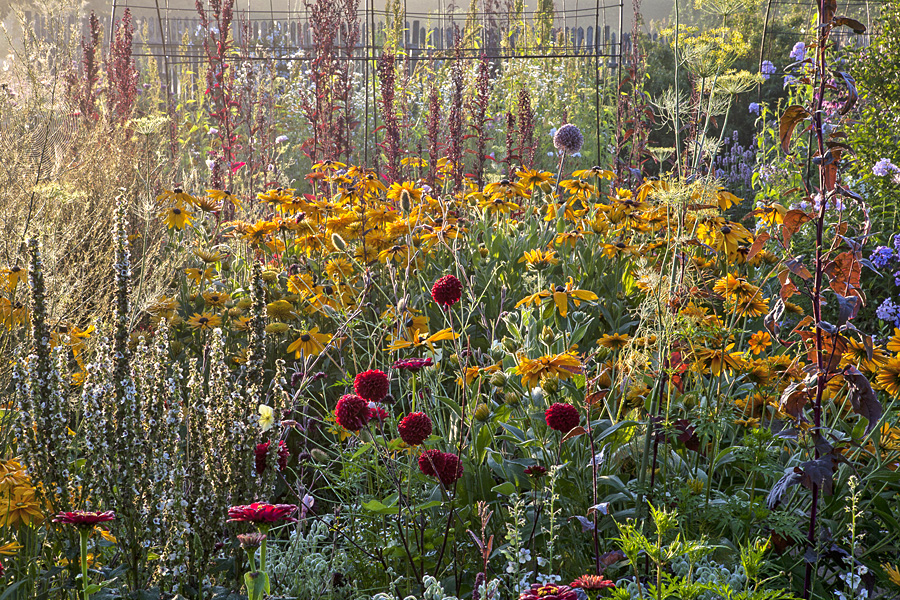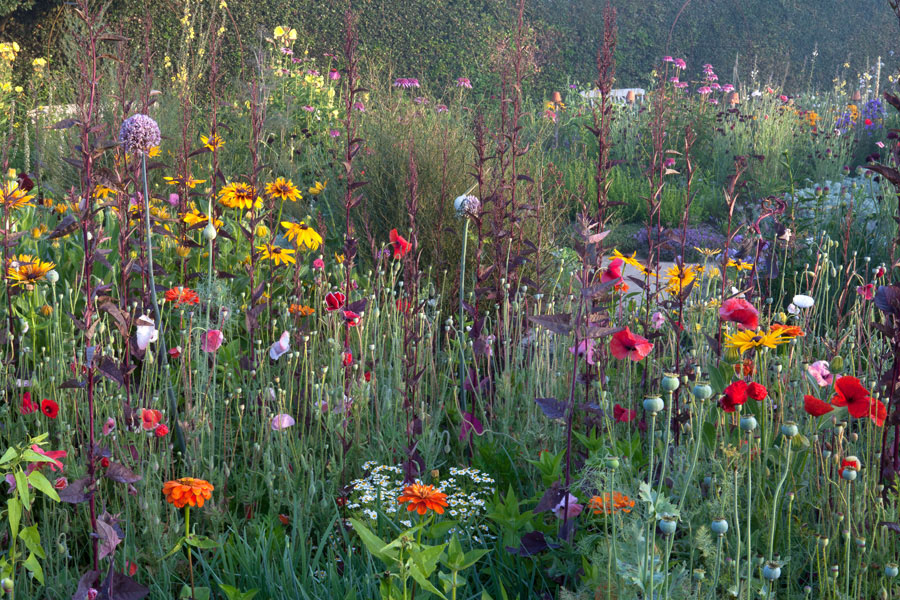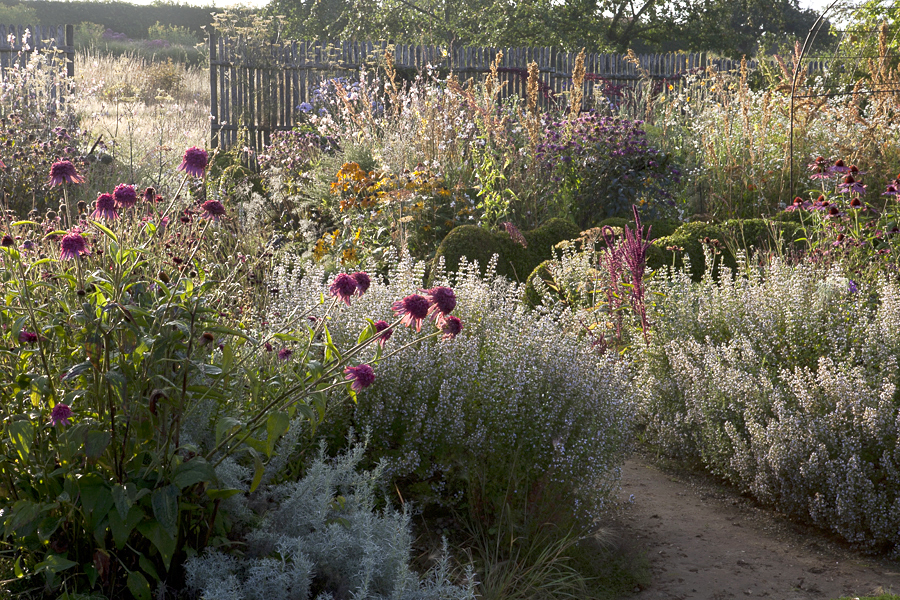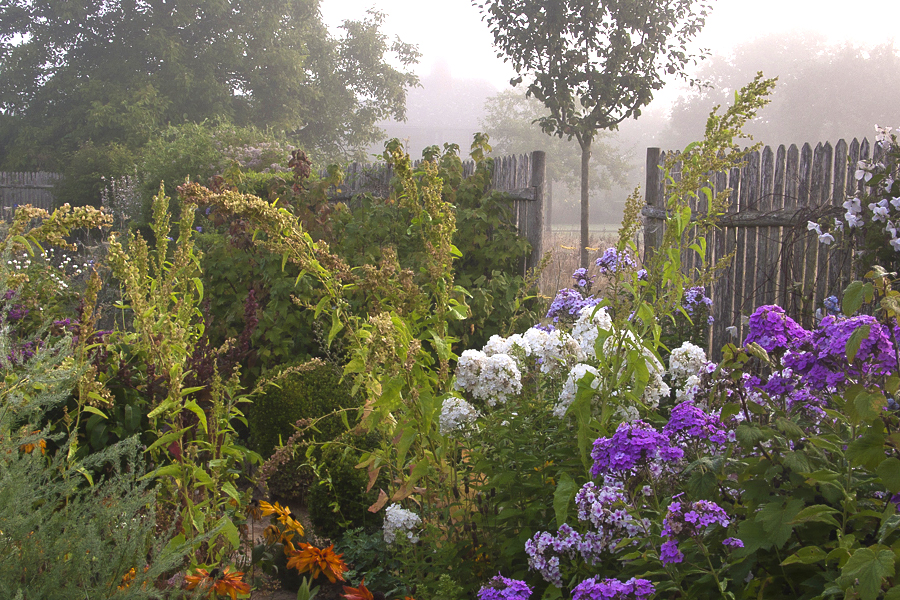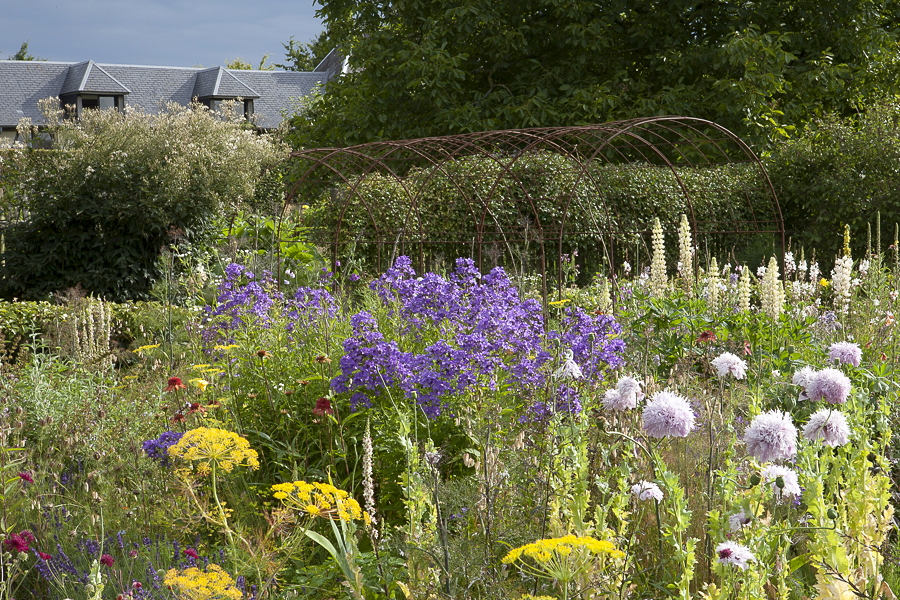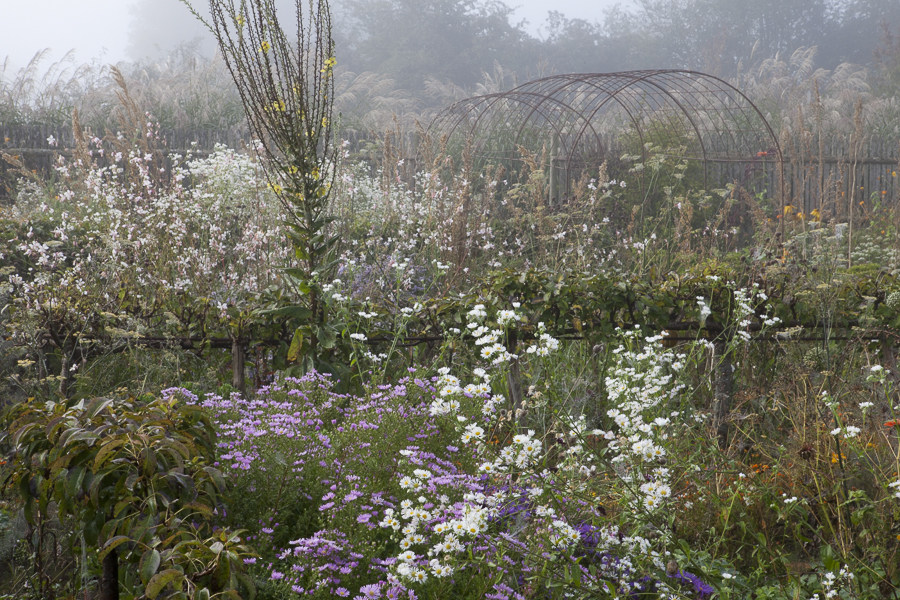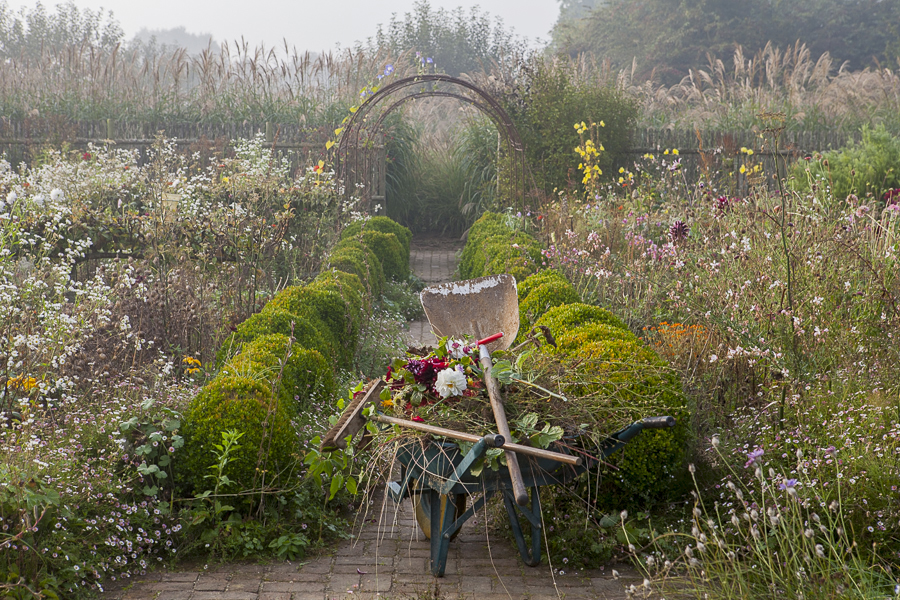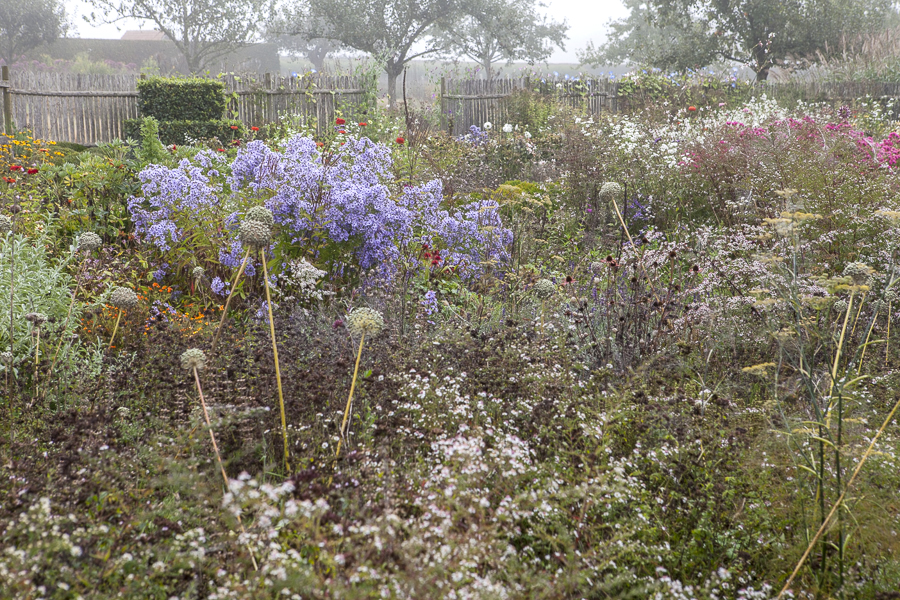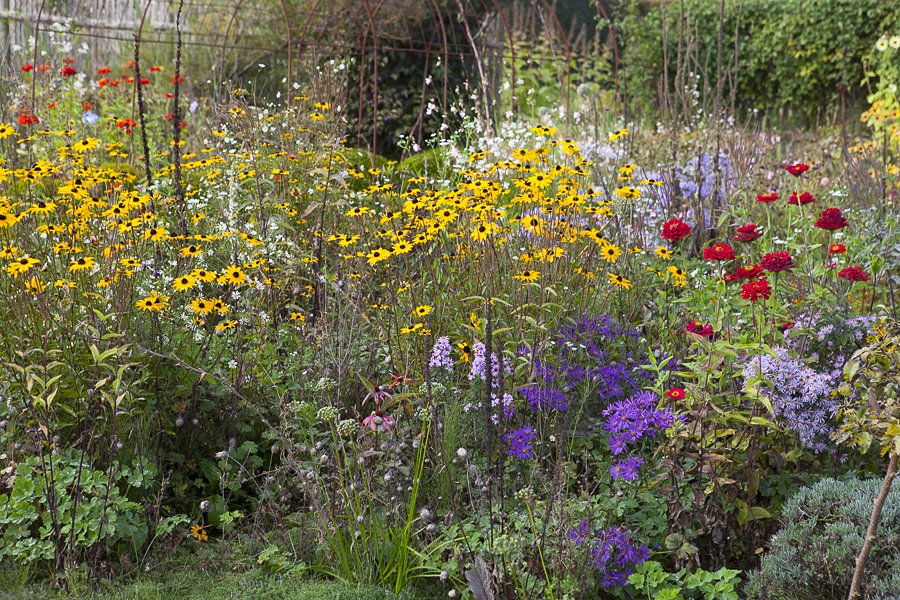Nous avions imaginé à l’origine y installer un potager ou légumes et fleurs se partageraient l’espace puis, progressivement, nous avons décidé d’en faire un « jardin de fleurs » à notre façon. Il n’est pas si simple de maintenir un espace fleuri pendant six mois en refusant d’avoir recourt à la méthode « espaces publics » : on enlève tout après les premières floraisons puis on replante de suite pour l’été et on répète l’opération à l’automne. Nous avons choisi a contrario d’agir en douceur pour que les différentes floraisons s’enchaînent naturellement. Ainsi les Zinnias prennent gentiment le relais des lupins, les tabacs émergent d’un tapis défleuri d’asperules orientalis. Les pavots, les nigelles de damas, les molènes, les fenouil , l’aneth ou les grandes arroches rouges et blondes se faufilent partout dans les interstices…. Il y a ici autant d’annuelles et de bisannuelles que de plantes vivaces. Nous aimons cette profusion apparemment spontanée que nous appréciions tant dans le sublime jardin (Priona) du regretté Henk Gerritsen en Hollande. Les buis, très présents, sont, taillés en ondulations en « turbans » ou en fleurs pour la petite touche de structure indispensable.
At first, we thought of settling a kitchen garden where vegetables and flowers would share the space then, gradually, we decided on turning it into a « flower garden » our-style. It is not that easy to maintain a space flowered for six months without doing it the « public garden » way where you take everything away after the first flowering period to plant again straight away for the summer and do the same in the Autumn.We have on the contrary, chosen a gentler approach so that the different flowerings merge naturally. So, the zinnias take on gently after the lupins; the tobacco plants surface from an asperula orientalis’ carpet at the end of its flowering. Poppies, Nigellas, Mulleins, Fennels, Dill or tall red and yellow orach which wind into in all the gaps…Here there are as many annuals and biennials as perennials. We like this apparently spontaneous abundance, which we so appreciated in the much regretted Henk Gerritsen’s wonderful garden in the Netherlands. The strongly present buxus are cut in waves, turbans or flowers for the essential structural touch.

